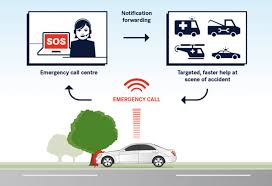
The next five years is seen as the tipping point for connected cars. With the eCall initiative in Europe driving incorporation of embedded Internet connectivity into all vehicles sold on the Continent, the connected car is about to go mainstream.
As connected devices proliferate, industry leaders understand that the real value of the Internet of Things (IoT) is not in the devices themselves it is in the recurring sources of revenue those services generate, according to Silicon Valley-based Jasper.
Automotive Industries (AI) asked Mark Thomas, Director of Product Marketing – Connected Car, Jasper, what new business opportunities are being provided by the advent of the connected car.
Thomas: The automobile is on the cusp of transforming into a consumer electronics device. In the same way that Apple has built a US$10 billion business out of iTunes, automotive companies should be able to build a profitable service business from their own as well as third party services. GM announced in April 2015 that the addition of 4G/LTE in-vehicle could boost profits over three years by $350 million.
AI: How does Jasper Technologies help meet the growing portfolio of connected services?
Thomas: The economics of the connected car has a major difference from the smartphone app economy. With smartphones, the mobile data costs are paid for directly by the end customer. With the connected car, the automotive OEM is the one required to pay for the data charges. Jasper helps auto companies separate the in-car Internet connection and divides up the data charges and send bills to multiple parties. Data associated with web browsing via Wi-Fi would be removed from the OEM’s bill and added to the customers own data plan.
AI: Tell us about the experience Jasper has had with US car makers like GM and Ford.
Thomas: Jasper is a trusted partner to GM, Ford, Chrysler, Volvo, BMW and many other leading OEMs. With Control Center OEMs are able to tune the connectivity to the vehicle lifecycle. In manufacturing the car can be automatically provisioned with connectivity settings that limit the data to a particular APN, set a data limit and connection limit while locking to a preferred operator network. In the dealership the same vehicle can be provisioned with settings that allow all the services to be used, but just during business hours. Once the car is sold, the connection can be automatically provisioned to allow a trial period of services and redirect to subscription portals when the trial ends.
AI: What are some of Jasper’s latest developments?
Thomas: China Unicom has recently switched to Control Center and has had tremendous success signing up Chinese OEMs to use their Control Center services platform. As more and more operators in key markets incorporate Control Center, it simplifies international program expansion for auto OEMs. One OEM estimates it saves them $650,000 each time they choose an operator that’s integrated Control Center into their network.
AI: What are some of the new Jasper partnerships?
Thomas: In 2015 Jasper partnered with some of the world’s biggest enterprise IT vendors, including Microsoft, Salesforce and SAP. Such partnerships mark a significant milestone in the mainstream enterprise adoption of IoT. Jasper’s partnership with Microsoft integrates the Jasper IoT platform into the Microsoft Azure IoT Suite. This provides enterprises with faster time to market, global visibility, and automated business decisions.
Jasper has also integrated its Control Center Platform with SAP’s HANA big data platform to enable enterprises to analyze all of their IoT service subscription and usage data. The collaboration with Jasper allows SAP to address the complexity of deploying IoT solutions and help customers introduce new service-based business models that can drive a competitive advantage.
Our partnership with Salesforce integrates the Jasper IoT platform with Salesforce’s customer relationship management platform. The integration of these two cloud-based solutions connects real-time data across both solutions and provides enterprises with a singular view of their IoT services and the impact those services have on their customers around the world.
AI: What is your prediction for IoT in automobiles over the next five years?
Thomas: Just as in the mobile and desktop Internet, the most successful Internet services are free and monetized through transactions and in-use purchases. The vehicle manufacturers will need to build their services on a platform that allows them to allocate the costs of running the services to the service providers and take a share of the revenues as they are monetized through the ecosystem of third-party connected car service providers. Jasper Control Center, with a global footprint of 27 mobile operator groups with mobile networks in over 100 countries, is the perfect platform to take auto OEMs into the next generation of connected car business models













More Stories
Some Ways How Motorists End Up in Collisions at U-Turns
Maximise Margins with Proven PPF Tactics
Finding the Car Boot Release Button – Tips and Tricks